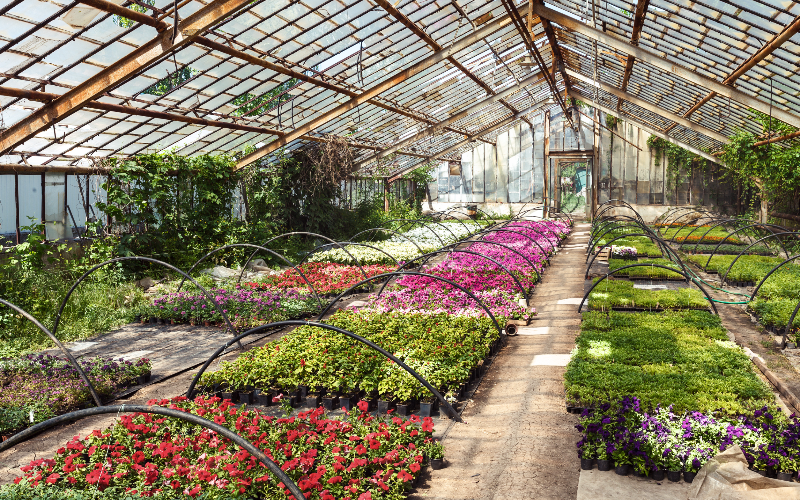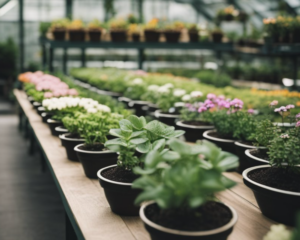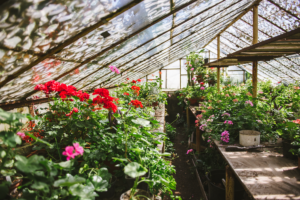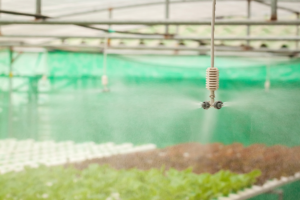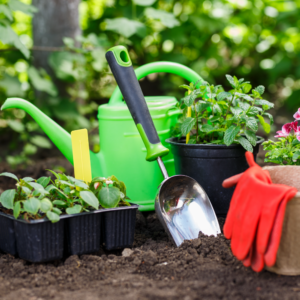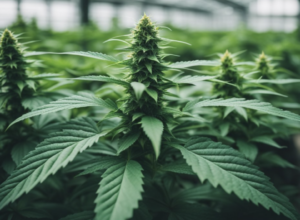I love spending time in my greenhouse. It’s like having a tiny garden paradise right in my backyard. When it comes to choosing the best plants to grow in a greenhouse, tomatoes, peppers, and cucumbers are at the top of my list. They thrive in the controlled environment, giving you delicious, home-grown produce almost all year round.
Another favorite is herbs like basil, cilantro, and mint. They grow well in the warm, humid conditions of a greenhouse. Plus, having fresh herbs on hand for cooking is always a win.
For a splash of color, I like to plant flowers such as begonias and geraniums. They brighten up the space and can even be brought inside to enjoy their beauty.
Choosing the Right Types of Greenhouse Plants
Picking plants for a greenhouse means considering your climate, space, and the plants’ needs. Some popular choices include vegetables, herbs, fruits, flowers, and even tropical plants.
Vegetables and Herbs
Vegetables and herbs are some of the easiest plants to grow in greenhouses. I like to grow tomatoes, lettuces, peppers, and cucumbers. These thrive in the controlled environment of a greenhouse.
Herbs such as basil, oregano, and cilantro do well too. They need plenty of sunlight, so place them where they get the most light. Leafy greens like spinach and kale are also great choices since they can grow all year long under the right conditions.
Fruits and Berries
Growing fruits and berries can be a bit more challenging but rewarding. In my greenhouse, I love growing strawberries, grapes, and melons. They need ample sunlight and well-draining soil.
Citrus fruits like lemons and oranges do well too, especially if kept in containers that you can move to follow the sun. Blueberries and raspberries can also be grown but might need some extra care with watering and soil acidity.
Flowers and Ornamentals
Flowers and ornamentals add color and beauty to any greenhouse. I usually go for roses, geraniums, and petunias. These plants not only look great but can also provide an aromatic environment.
Ornamental plants like ferns and succulents are low-maintenance and can thrive in greenhouse conditions. Bulbs such as tulips and daffodils also do well in the controlled environment.
Tropical and Exotic Plants
Tropical and exotic plants can turn your greenhouse into a mini jungle. I enjoy growing orchids, bromeliads, and banana plants. These plants love warm temperatures and high humidity.
Spices like ginger and turmeric can also be grown. Tropical plants often need a bit more care, like regular misting and temperature control. Foliage plants like philodendrons and monstera add a lush, tropical feel.
Cultivating Vegetables in Your Greenhouse
Growing vegetables in a greenhouse lets me extend the growing season and protect my plants from harsh weather. I can plant a variety of veggies like leafy greens, root vegetables, and even some that need a bit more warmth.
Leafy Greens and Salad Staples
In my greenhouse, I love growing leafy greens like lettuce, cabbage, kale, and even green onions. They thrive in the controlled environment.
Lettuce and kale are easy to grow and don’t take up much space. Tip: Make sure to water regularly but avoid making the soil too soggy. Cabbage needs a bit more room to grow, but the cool greenhouse air helps it thrive. Green onions grow quickly and can be harvested often, perfect for a steady supply.
Root Vegetables and Legumes
Root vegetables like carrots and garlic, and legumes like peas, are a fantastic choice for my greenhouse.
Carrots do best in deep soil. I use a sandy mix to avoid hard clumps. Garlic is straightforward—just plant cloves in well-drained soil. Peas like cooler weather and benefit greatly from the greenhouse environment. Tip: Provide support for pea plants to climb as they grow.
Nightshades and Cucurbits
Some of my favorites to grow are tomatoes, peppers, and squash (cucurbits). These need a bit more warmth and sunlight, which the greenhouse provides perfectly.
Tomatoes and peppers need staking or cages for support. I start them from seeds in early spring. Squash needs space to spread out. Tip: Hand-pollination might be necessary for squash as there are fewer pollinators in a greenhouse. Asparagus can also be grown but know it takes a few years to get a good harvest.
Growing Fruits and Exotic Plants
Growing fruits and exotic plants in a greenhouse can be a rewarding experience. You can cultivate a variety of tasty and unique crops that aren’t typically grown in outdoor gardens.
Citrus Fruits and Stone Fruits
I find that citrus fruits like lemons, limes, and oranges thrive well in greenhouses. They need a lot of sunlight and warmth, but they also require good drainage. Stone fruits such as peaches and nectarines also do great. They need regular watering but be careful not to overwater.
- Citrus Care: Keep the soil slightly acidic. Use balanced fertilizers.
- Stone Fruit Care: Prune regularly to allow air circulation.
Both plant types can be grown in pots, making them easy to move around if needed.
Grapes, Berries, and Melons
Grapes, strawberries, raspberries, and melons are another fun group to grow. Grapes need strong support like a trellis. Strawberries and raspberries do well in hanging baskets or raised beds.
- Grapes: Prune to avoid overcrowding.
- Strawberries: Choose everbearing varieties for continuous harvests.
- Melons: Need plenty of space and warmth.
Each has specific needs, but all benefit from the controlled environment of a greenhouse.
Unusual Varieties and Ethnic Crops
Some unusual varieties and ethnic crops you can grow include dragon fruit, mushrooms, and even bamboo. Dragon fruit (a type of cactus) needs minimal watering but lots of light. Mushrooms need a dark, humid space, making them great for the shadier parts of a greenhouse.
- Dragon Fruit: Use cactus soil and avoid overwatering.
- Mushrooms: Ensure proper humidity and temperature.
- Bamboo: Some species can thrive in pots inside the greenhouse.
These unique plants can add diversity and excitement to your greenhouse garden.
Harvesting and Storing Your Greenhouse Bounty
Proper harvesting and storage of your greenhouse crops will keep them fresh and extend their shelf life. It’s important to know when to pick your crops and the best ways to store them.
Best Practices for Harvesting
Timing is key for harvesting. Check the age of the plants and pick them when they are ripe.
Use clean, sharp tools to avoid damaging the plants. Harvest in the morning when it’s cool. For lettuce and greens, cut the leaves about an inch above the soil.
For tomatoes, twist gently off the vine. Root vegetables like carrots need to be loosened first with a garden fork. Fruits like strawberries should be picked when fully red.
Storage Solutions and Preservation
After harvesting, clean your produce to remove soil and pests. Store greens in the fridge wrapped in a damp cloth. Root vegetables can be stored in a cool, dark place.
Tomatoes should be kept at room temperature, away from direct sunlight. Consider canning or freezing excess produce for long-term storage. Use airtight containers for berries in the fridge. Dry herbs in bundles and store them in airtight jars.
Special Considerations for Greenhouse Growing
When growing plants in a greenhouse, it’s important to think about the unique environment and how plants might interact. For example, managing different temperature zones and choosing plants that grow well together are key.
Microclimates and Plant Compatibility
Ever noticed that different parts of your greenhouse feel warmer or cooler? That’s because of microclimates. Doors, fans, and ventilation systems can create these small temperature zones. Some plants love warm, sunny spots while others need cooler, shadier places.
You can use these microclimates to your advantage. For instance, put greenhouse flowers that need lots of sun close to the windows or near a fan for better air circulation. In the back or shaded areas, you can grow plants that prefer cooler temperatures.
To make it easy, I recommend keeping a small chart of what each plant likes. Match the plant’s needs to the right spot in your greenhouse. This simple step will help keep your plants happy and growing strong.
Frequently Asked Questions
Let’s talk about which plants do best in a greenhouse throughout the year, interesting plants to try, and which plants to avoid.
Can you list the top plants that thrive in a greenhouse year-round?
Tomatoes, cucumbers, and peppers are great for year-round growing. They love the controlled environment.
Herbs like basil, rosemary, and mint also do very well. They grow quickly and are easy to maintain.
What are some unique plants that you could experiment with in a greenhouse?
Try growing exotic plants like orchids, which thrive in the humid conditions of a greenhouse.
You might also experiment with citrus trees. They do well in pots and love the warmth.
What should I plant in my greenhouse when it gets hot in the summer?
During hot summers, leafy greens like lettuce, spinach, and arugula can grow well.
Cucumbers and beans also handle the heat nicely and produce lots of veggies.
During winter, which plants can survive and flourish inside a greenhouse?
Cold-hardy veggies like kale, broccoli, and carrots are perfect for winter growing.
Spinach and Swiss chard can also withstand colder temperatures.
Are there any plants that are a big no-no for growing in a greenhouse?
Avoid growing plants like corn and pumpkins. They require too much space and are better suited for an outdoor environment.
Certain trees and large shrubs are also not ideal due to their size and root system

